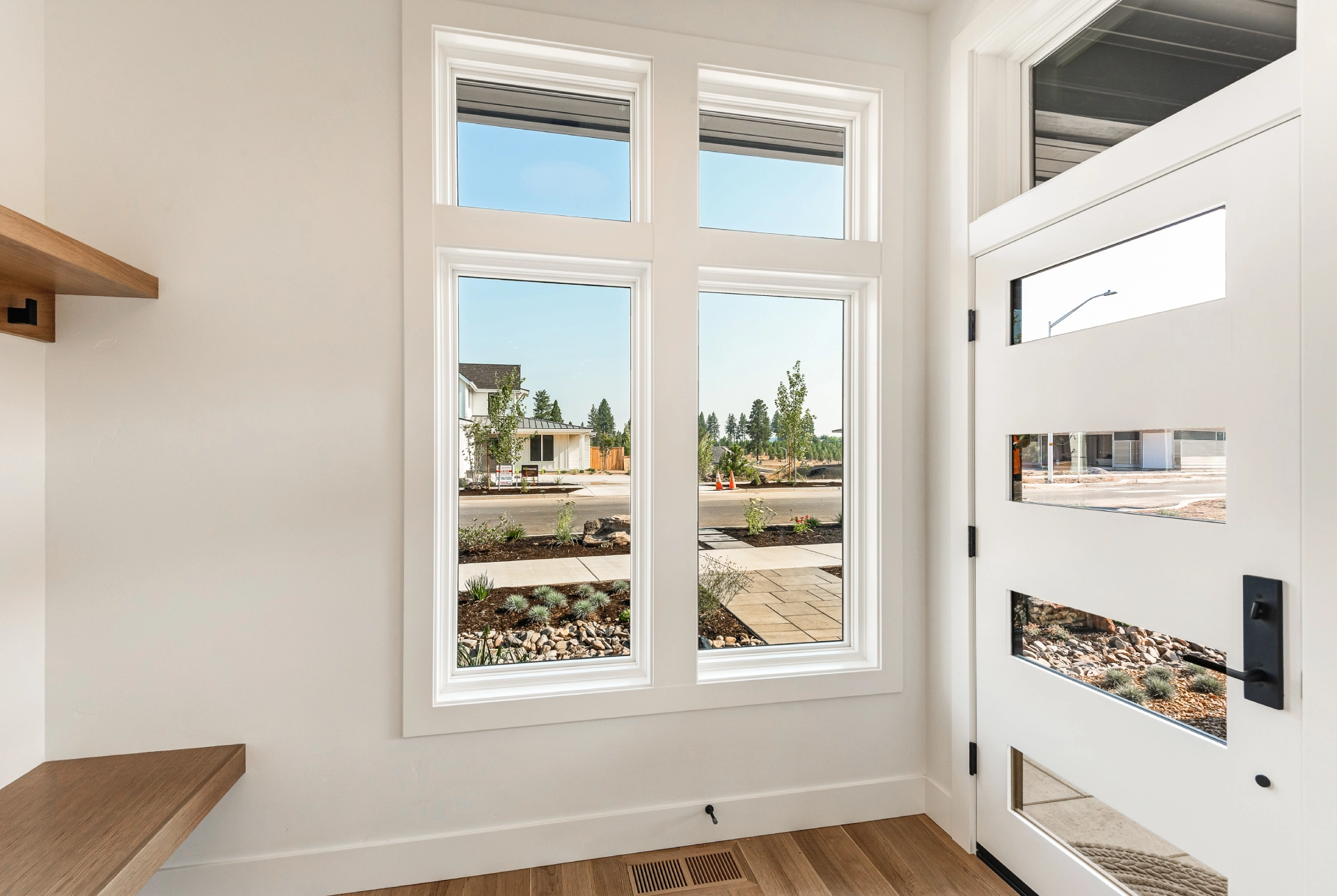Frank Lloyd Wright’s Prairie

Inspired by Frank Lloyd Wright’s iconic Prairie Style, this home exemplifies architectural principles that prioritize harmony with the surrounding environment. The design features two-story complex massing, a low-sloped hipped roof, and expansive three-foot overhangs. These elements emphasize horizontal planes, a hallmark of Prairie Style, while the numerous grouped casement windows flood the interior with natural light, creating a warm and inviting atmosphere.
Originally conceived to blend seamlessly with the midwestern landscape, the Prairie Style’s characteristics also resonate deeply with the Craftsman Style commonly found on the West Coast. Both styles emphasize the use of natural materials, horizontal proportions, and a connection to the earth. These shared attributes create a timeless aesthetic that bridges regional design philosophies, making the Prairie Style as relevant in the Pacific Northwest as it is in the Midwest.
Central to the Prairie Style is Frank Lloyd Wright’s fascination with “breaking up the box.” This concept involves designing spaces that flow organically, blurring the boundaries between interior and exterior while rejecting the traditional rectangular form. Prairie Style homes typically employ horizontal lines and open layouts to create an expansive, grounded appearance. Historically, single-level Prairie Style homes were rare, as the style often required two stories to fully express its proportions and horizontal emphasis. When limited to a single level, these homes often transitioned into the Usonian Style, Wright’s later architectural movement focused on affordable, functional housing.
For single-level Prairie Style homes to maintain the aesthetic integrity of the style, they often incorporate additional architectural elements. Features such as prominent fireplace or chimney structures, extended four-foot roof overhangs, and the use of masonry, stucco, or wood accents enhance the horizontal emphasis. These details not only preserve the visual impact of the style but also ensure the home remains rooted in its natural surroundings.
By blending these design principles, this home honors the legacy of Prairie Style architecture while adapting it to modern living on the West Coast. Its thoughtful integration of form, function, and materiality results in a space that is both timeless and deeply connected to the landscape.



















